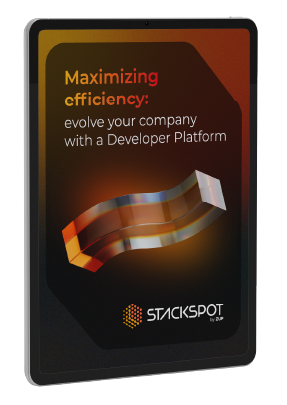How often do you think about how to optimize business operations? Indeed, it comes up as you weigh costs with ROI and consider how to improve the business.
The right strategies, processes, and tools for software development can help increase team productivity and efficiency and achieve better results for the company.
The idea sounds nice, but how do you make reasonable changes that optimize business operations? Keep reading, and you’ll see.
Introduction to Business Operation Optimization
In simplest terms, Business Operation Optimization maximizes operational capabilities while minimizing costs.
What does that mean in practical terms?
It looks at ways to improve efficiency for the same level of development. It might also explore areas where you can cut costs without losing efficacy. It will also investigate improving overall output without significantly straining your existing resources.
Some specific mechanisms for boosted efficiency include open-source libraries, API catalogs, AI tools, or even better developer communications platforms.
Anything that raises efficiency can lower the cost-to-product ratio. From there, you might save money outright by reducing labor investments. You could switch to more affordable software or infrastructure alternatives.
At the same time, if you’re lowering the cost of production, you could try to increase output over reducing operational costs. The goal here would be to sell more products or services without spending more on infrastructure.
These concepts apply universally to any business, but we can delve into some exciting and potentially unique ideas in software development.
Creative strategies for Business Operation Optimization
A lot of operation optimization can boil down to universal concepts. From there, we can look into creative strategies.
Let’s consider four pillars of efficiency strategies:
- Reduce waste
- Choose KPIs
- Evaluate scope
- Leverage technology
The fourth pillar is self-evident. Once you know what you’re after, you can research tech tools that help you achieve specific goals. Most will fit under an Enterprise Developer Platform (EDP) umbrella, but more on that later.
The other three pillars seem like more novel ideas.
How do you reduce waste in software development?
The answer depends on your process, but a quick case study can highlight the concept.
Imagine a development team building images and containers, but each team member sources images differently. Some make them from scratch. Others go to open sources. The resulting containers will vary wildly in size and performance. Additionally, they might contain unexpected vulnerabilities.
You could reduce waste in this example by standardizing image sources to ensure you aren’t building your software with inherent vulnerabilities you could otherwise avoid.
What about KPIs, then?
Again, you will customize the concept according to each team, but there’s a common pitfall. In the days of extensive data, assigning and measuring as many KPIs as possible is accessible. However, that can prove daunting for your developers.
Instead, lower the number of KPIs to focus on the most valuable metrics. And how do you do that?
You can use that daunting data stack to make many KPIs, analyze their value, and then stick with the most valuable handful.
In other words, run data analysis on your KPIs to figure out what deserves your focus.
Lastly, we can consider the scope
In modern development, huge software goals are often broken into smaller, manageable chunks. This allows an individual developer to hone in on their small piece — producing better code and reducing bugs and issues.
Scope presents a challenge. You want innovation in your software, but you also wish to have consistent outputs. You can marry these ideas by adding problem-solving to the scope of each team member’s responsibilities. Don’t just give them a chunk of code to write as an assignment. Give them a goal and some creative freedom. You gain innovation without breaking efficiency.
These ideas are intended to get your creative juices flowing. There are many innovative strategies. As you push your creativity, you can keep your thoughts focused and in check with the rest of the concepts below.
Data-Driven Decision making in Business Operations
We already talked about using data to determine the best KPIs. Naturally, data can influence many operational decisions.
While you get creative, you can always ground your ideas by remembering a few essential measurements:
- Cost
- ROI
- Time
- Output
Naturally, you have to adjust the metrics according to the project. Are you looking at the cost of the entire software development process or just one component? Are you looking at the time to completion or time to develop a single test?
You get the idea, but these essentials ultimately drive your business. You can explore as many other data sets as possible but will always return to these four.
Tech teams’ motivation and empowerment
Developers do the essential work, and your optimization hinges on their success. When you empower them, you get better development, which circles back to your EDP. It should serve as the technological pillar for developer empowerment.
Yet, empowerment alone isn’t enough. A motivated team will consistently outperform an unmotivated team.
So, how do you motivate and empower your developers?
Focus on four essential principles:
- Collaborative process
- Autonomy
- Cognitive load
- Integrated processes
Let’s look at each in its section.
1. Collaborative processes
Collaborative resources are the most empowering you can provide to your tech teams. It makes intuitive sense. If your team members can work together, they have more cognitive power at their fingertips.
So, how do you establish and promote collaborative processes?
It comes in two ways: technologically and interpersonally.
Technologically, you promote collaboration by providing tools. Make it easy to share content and technology stacks. Allow multiple channels of communication. Incorporate remote work and encourage sharing. EDP makes the process of sharing and reusing technologies efficient.
Of course, the developers need to “feel” a sense of collaboration, which is about interpersonal management.
One of the best ways to jump-start collaboration is through mentorship programs. Pair seasoned developers with newcomers. It builds relationships that inevitably lead to more cooperation.
You can add to this with team building. Put groups together on short and small projects to force more interactions. From that, actively encourage cooperation on other projects and build the culture.
2. Autonomy
Autonomy is one of your best motivational tools. Most developers like feeling a little freedom and being the masters of their destinies.
Autonomy instills a sense of trust. It also allows developers more agency in how they work. All of these are great for morale and can often be motivating.
How do you increase autonomy in a development setting? Better team management goes a long way:
- Set clear goals.
- Empower collaboration and communication, and then let the developers work.
- Reduce micromanagement and increase developmental flexibility.
- Autonomy tends to flow from those changes.
3. Less cognitive load
Stress is a demotivator. As your developers feel more and more of the crunch, some will thrive, but most will lose steam.
In software development, cognitive overload is often a primary source of stress. One of the best ways to alleviate this is by reducing cognitive load.
Collaboration and mentorship can help. You can also leverage technology here.
AI tools dramatically lower cognitive drain — allowing developers to work better instead of harder. Large language models can take over a significant portion of writing code, freeing up mental resources for planning and development.
Stay ahead of tech trends, and your staff will benefit.
4. Integrated processes
Integration is where you can streamline many processes and boost efficiency. It reduces the burden on any team member, leading to better motivation and a stronger sense of empowerment.
The best example is continuous integration.
It is where you constantly merge code through a central repository. Code is tested and validated as part of the process, mainly using automated methods.
Continuous integration allows developers to see successful code components as they work through development. It also ensures that collaboration doesn’t hit brick walls in the form of broken code.
Tech solutions for enhanced efficiency in Business Operations
Focusing on cognitive load, integration, autonomy, and collaboration shows merit. What technology can we explore to achieve goals in these areas?
Technology is too vast to cover everything here, so let’s pick three promising areas: cloud, AI, and EDP.
Cloud
Cloud infrastructure runs many aspects of collaboration. Want to share code or files? Take it to the cloud. Want a live chat conversation? Run it through the cloud. Want to ensure that remote workers have access to all pertinent data and tools? You know the answer. Put it all in the cloud.
All of this is familiar information. The real takeaway is understanding that all your cloud endeavors relate to business operations optimization.
Cloud resources sit at the heart of everything from collaboration to efficiency to safe, redundant, and reliable infrastructure.
Here’s another way to think about all of this.
You might manage most of your development operations from a single management platform. How does it integrate with your cloud resources? If it’s not where you want it, it’s time to consider alternative options.
AI assistant
We’ve already seen a few ways that AI can improve business operations. Speeding up development, lowering cognitive burden, and empowering developers represent the beginning.
AI assistants can help on the management side, too. You can automate aspects of access control and security. AI empowers your data and analytics. If you’re using data to inform decisions, you need AI.
These tools are increasing. As much as they can help now, they’ll help more next year and more the year after. If you want to focus continued learning on just one area, consider AI. It’s the ultimate key to better efficiency.
EDP
It all comes together with your EDP. As a reminder, this is an Enterprise Developer Platform. It’s a central technology suite that provides everything you just read about. Here’s a quick list of what you get from a good EDP:
- Collaboration tools
- Communication tools
- Cybersecurity
- Team management and administration
- Cloud connectivity
- AI and code generation
- API catalogs and automation
- Continuous integration
- Validation
That’s just the beginning.
When you want to bring everything together under one technological platform, your EDP gets you there.
Why choose StackSpot to boost your Business Operations
Today, you looked at how to optimize business operations. You explored common problems with optimization, ways to empower and motivate your team, and technology options that assist along the way.
Using technology to focus operational changes, you can build the team and processes you want. If you want more ideas about using technology to solve these problems, check out the StackSpot blog.
Take advantage of the opportunity to comment below on what you thought of the article and leave your questions and opinions on optimizing a business’s operation.












